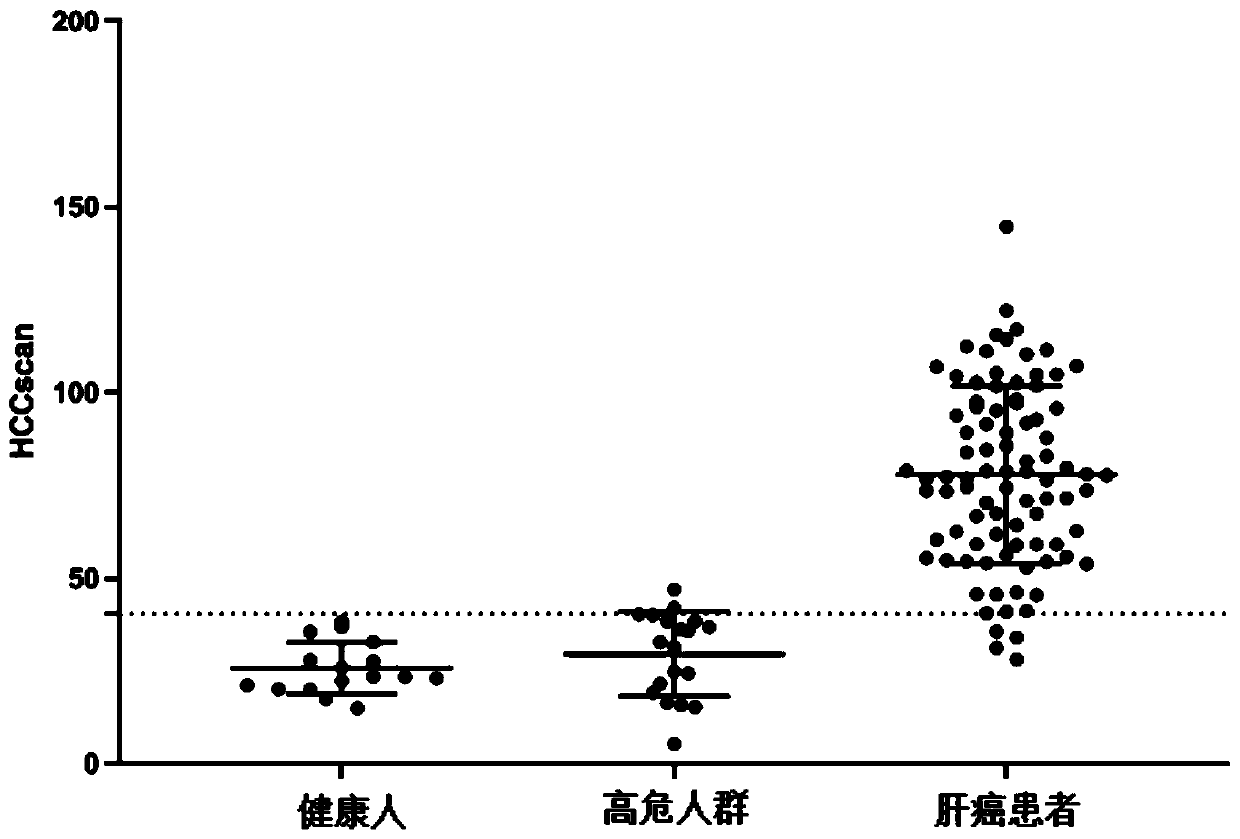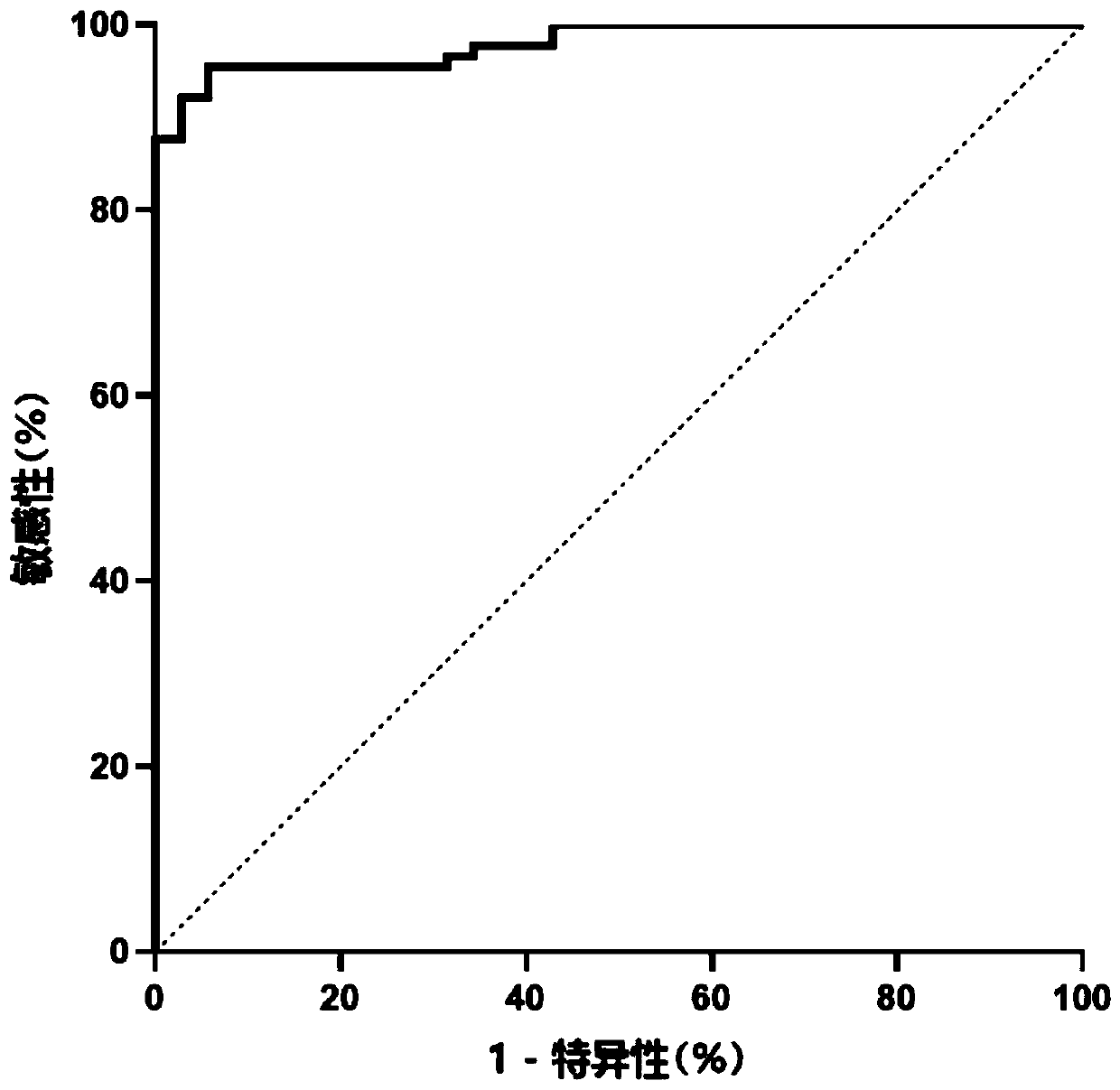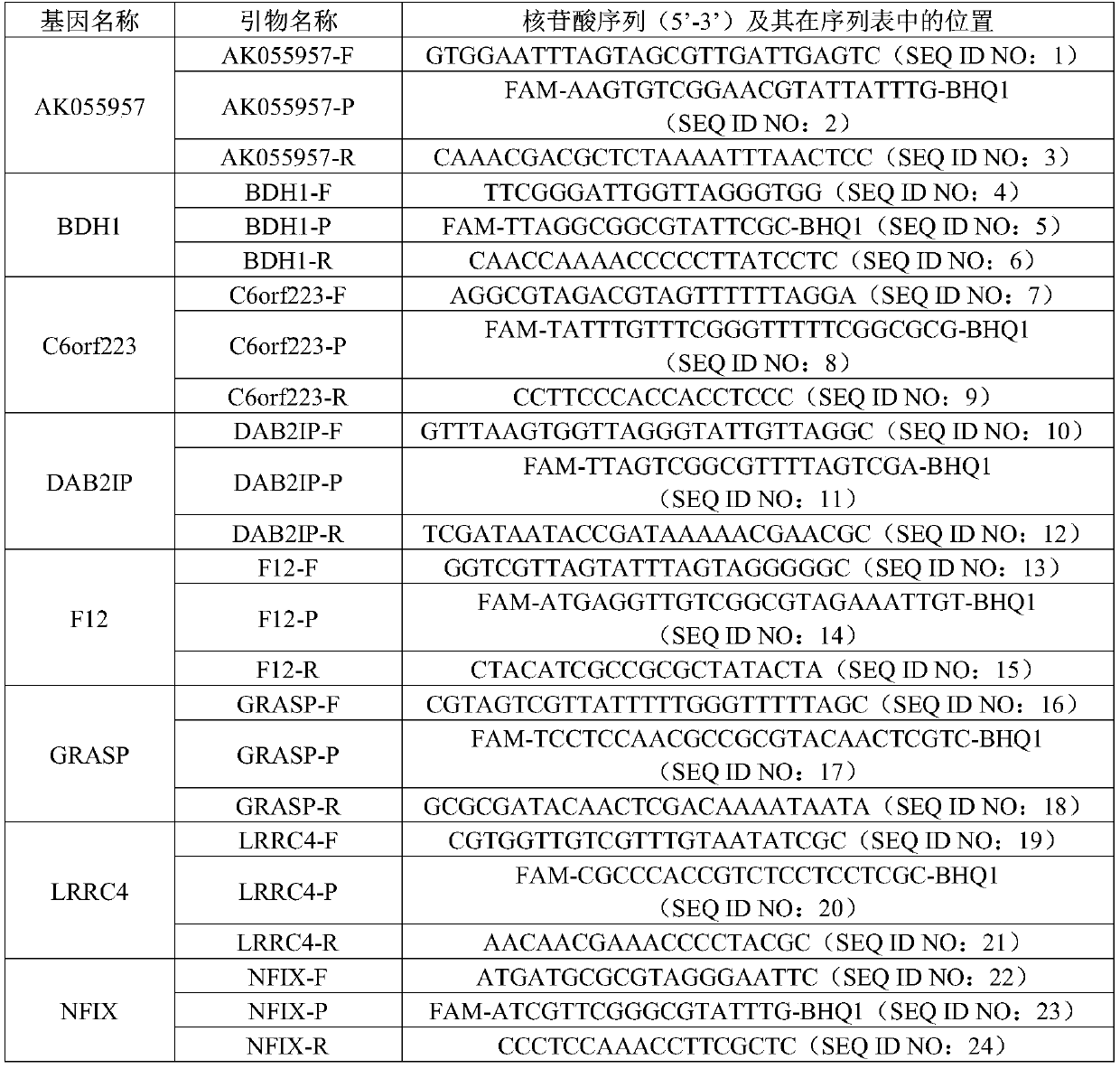Combination marker used for liver cancer detection and application thereof
A marker, liver cancer technology, applied in the field of biomedicine, can solve only 33% of the problems
- Summary
- Abstract
- Description
- Claims
- Application Information
AI Technical Summary
Problems solved by technology
Method used
Image
Examples
Embodiment 1
[0061] Embodiment 1, the establishment of the method for liver cancer detection
[0062] 1. Obtain markers for liver cancer detection
[0063] The inventors of the present invention combined various databases and comprehensive clinical information, designed probes to enrich the methylation sites of related genes through large-scale screening, and then compared the cfDNA 3-6 months before the diagnosis of liver cancer by building a library and sequencing The difference in methylation level between samples and cfDNA samples of non-liver cancer patients was used to obtain markers for liver cancer detection. The marker consists of TBX15 (GeneID: 6913), AK055957 (GenBank: AK055957.1), BDH1 (GeneID: 622), C6orf223 (GeneID: 221416), DAB2IP (GeneID: 153090), PPFIA1 (GeneID: 8500), LRRC4 ( GeneID: 64101), NFIX (GeneID: 4784), PSD4 (GeneID: 23550), GRASP (GeneID: 160622), OPLAH (GeneID: 26873) and F12 (GeneID: 2161).
[0064] According to the nucleotide sequences of the above-mentione...
Embodiment 2
[0099] Embodiment 2, accuracy experiment
[0100] Select 11 cases of liver cancer tissue samples and 12 cases of white blood cell samples from healthy people, and measure their HCCscore. The names and types of the samples are listed in columns 1 and 2 in Table 7. For each sample to be tested, the following experiments were performed:
[0101] 1. Same as 1 in step 2 of Example 1.
[0102] 2. Use The DNA Mini Kit extracts the genomic DNA of the sample to be tested, and obtains the genomic DNA of the sample to be tested (OD 260 / 280 between 1.8-2.1).
[0103] 3. Take the genomic DNA of the sample to be tested and use EZ DNA Methylation-Lightning TM The Kit performs bisulfite conversion and then purification to obtain the converted DNA of the sample to be tested.
[0104] 4. Replace the "cfDNA transformed by the test subject" in step 2 of Example 1 with the transformed DNA of the test sample, and the other steps remain unchanged.
[0105] 5. Same as 5 in Step 2 of Exampl...
PUM
 Login to View More
Login to View More Abstract
Description
Claims
Application Information
 Login to View More
Login to View More - R&D
- Intellectual Property
- Life Sciences
- Materials
- Tech Scout
- Unparalleled Data Quality
- Higher Quality Content
- 60% Fewer Hallucinations
Browse by: Latest US Patents, China's latest patents, Technical Efficacy Thesaurus, Application Domain, Technology Topic, Popular Technical Reports.
© 2025 PatSnap. All rights reserved.Legal|Privacy policy|Modern Slavery Act Transparency Statement|Sitemap|About US| Contact US: help@patsnap.com



